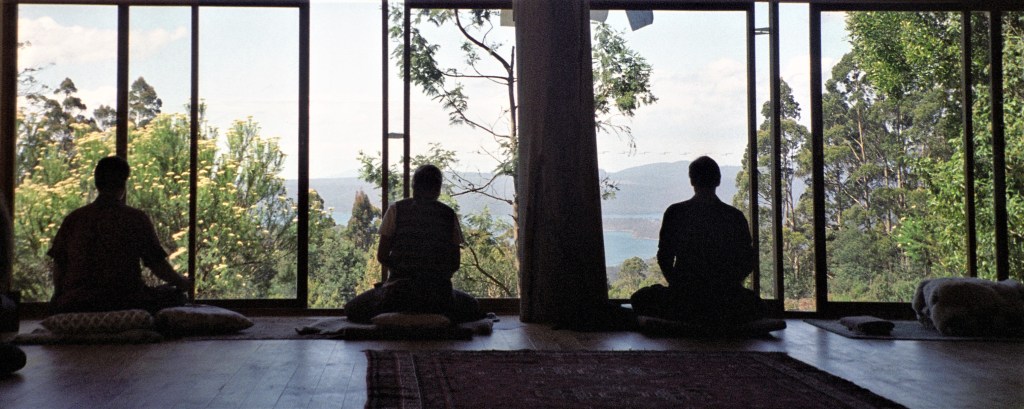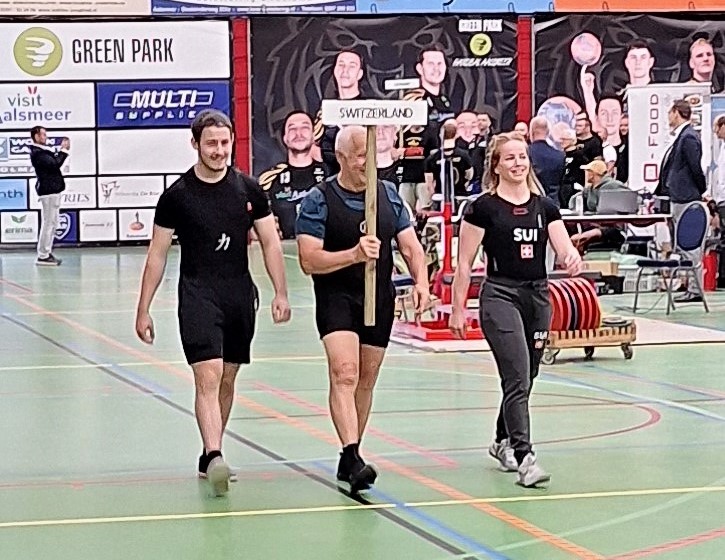
Like many scientists, I dismissed panpsychism as hugely implausible until recently. Then I read discussions of it in Annaka Harris’s 2019 book “Conscious” and David Chalmers’ 1996 book The Conscious Mind: In Search of a Fundamental Theory. They persuaded me that panpsychism should be considered as a potential solution to the hard problem.
There has been a revival of interest in panpsychism and I bought three recent books on it. Before reading them, I decided to think through for myself what a defensible form of panpsychism would look like, and what questions it raises.
The Hard Problem — two options
David Chalmers famously termed this the “hard problem” of consciousness. Most scientists and philosophers simply assume it must be an emergent property of the brain.
The alternative option is some form of panpsychism: consciousness is a fundamental property of matter alongside things such as charge, spin, etc. Chalmers also suggested a hybrid option, that consciousness derives from some other class of more fundamental non-physical properties. Consciousness is emergent from these more fundamental non-physical properties in sufficiently complex arrangements of matter.
Emergence
Emergence refers to properties or behaviors of a complex entity that its parts do not have on their own and emerge only when they interact in a wider whole. Some examples of emergent properties/behaviours include the structure of snowflakes, waves and chaotic fluid flow, chaotic behaviours of simple predator-prey systems, ant colonies, and the blood pumping properties of hearts.
These are all examples of what philosophers call weak emergence. The emergent properties are still descriptions of matter and how it behaves as witnessed from the outside, they are in the same category of things as the underlying basic properties of that matter.
Strong emergence refers to a fundamentally different category of thing emerging from things lacking that category. The proposed emergence of first-person experience from non-sentient matter would be an example of strong emergence. There are no known examples of strong emergence as far as I know.
All discussions of consciousness as an emergent phenomenon simply assume it is emergent. Chalmers argues that strong emergence is uncomfortably like magic, but the emergent phenomena are still regarded as being utterly dependent on the physical.
Panpsychism
Panpsychism is the view that all matter is imbued with consciousness in some sense. The term has been used to describe a wide range of thinking from the animism of primitive religions to a mind-like aspect, or to some much simpler form of basic awareness.
Panpsychism was a common view among philosophers in the 19th century, but fell out of favour in the twentieth century. There has been a recent revival of interest among philosophers such as Thomas Nagel, Galen Strawson, David Skrbina and Philip Goff. Even some neuroscientists such as Giulio Tononi and Christof Koch have proposed that consciousness is widespread and can be found in simple systems.
Most scientists are very reluctant to consider panpsychism, and many dismiss it as obviously ridiculous. The idea that “rocks are conscious” is taken as so obviously ludicrous that panpsychism can be safely dismissed out of hand.
Chalmers has noted that panpsychism avoids the need to have consciousness wink-in or switch-on at some particular level of complexity. Rather it may be a universal property, with very simple systems having very simple phenomenology and very complex systems having very complex phenomenology. Annaka Harris also noted that “In actuality, if a version of panpsychism is correct, everything will still appear to us and behave exactly as it already does.”
What does consciousness refer to?
In a previous article, I discussed the experience of pure conscious awareness when thoughts, feelings, sensations drop away. Zen refers to this as “body and mind dropped away”. This experience is accessible through a range of meditation practices and also occurs spontaneously in some circumstances.
This experience allows the meditator to realize that they are not their thoughts, or their feelings, that these arise and pass away. Contentless consciousness is pure awareness per se. The part of my brain responsible for assigning labels and meaning — to objects, events, interactions — is not currently online.
Is this pure awareness inherently nondual? I’ve have had a taste of nondual consciousness once or twice. Insufficient for me to claim to understand it or draw any conclusions yet. I suspect the pure state is indeed an unchanging non-dual awareness. Duality starts with brain processes classifying what is experienced.
Contents of consciousness
These include thoughts, verbalized or not, feelings and emotions, and sensory perceptions.
Are qualia also contents of consciousness? They are not illusory, the one thing direct experience of the suchness of something cannot be is an illusion. And they are not reducible to underlying neural activity as they refer to the first-person suchness of experiencing the particular content. I am inclined to think that suchness remains part of the content of awareness.
Pierz Newton-John makes an argument I find convincing that colours convey information about the environment (dangers, food, etc) and that evolution results in the attachment of emotions to colours to ensure we react appropriately to such colour information. In other words, the experience of a colour develops an emotional richness, ie complex qualia. This can only arise in systems that possess the ability to summarise and respond to complex information in their environment.
He sees this as ruling out panpsychism (because he considers qualia as defining of consciousness). I don’t. If qualia are contents of consciousness, then indeed they will require nervous systems to have any complex suchness. Objects without brains will have nothing but some rudimentary awareness and very rudimentary suchness of that awareness. There is likely not something it is like to be a rock beyond some very tiny awareness per se, no different to our pure contentless awareness.
Philosophers see qualia as being key to what it is like to be human, or a bat, or a dog. And it seems reasonable to me that what it is like to be a bat is very much about the qualitative aspect of bat sensory, bat feeling and bat thoughts, because these will be quite different to, say, human qualia for sensory, feeling and thinking inputs to consciousness. And that would fit with my suspicion that contentless consciousness (pure contentless subjective awareness) might not differ across species, except perhaps in some sort of strength measure (depth?) of awareness.
My experiences of contentless consciousness in meditation seem to confirm that qualia drop away along with other content of consciousness. The hard problem relates to contentless consciousness, pure awareness, The easy problem relates to qualia and other contents of consciousness, and their origins in brains and nervous systems.
Non-ordinary states
There are many of these states other than everyday waking consciousness. We experience several of these each day, including the hypnagogic state, REM (dream) sleep and deep sleep. Let’s consider psychedelic-induced states as an example. In these states, is it only the contents of consciousness that change or does consciousness per se (aka pure awareness) also change?
We know that psychedelics alter neurotransmitter levels and block or activate neurotransmitter receptors. We also know that brain networks are up- or down-regulated, and that brain network connectivity is altered. Qualia and sensory experiences are altered. An example is synesthesia when sensory crossovers occur, such as tasting colours or feeling sounds.
I think it most likely that psychedelic experiences are all about the contents of consciousness. Pure awareness remains unchanged in altered states. But I could be wrong.
Attention
We can focus our attention on specific content of consciousness, such as breath counting, mantras, visual images, flames, or koans, and on awareness itself. Or we can expand attention to be non-specific and broad (mindfulness meditation, shikantaza). How does attention work? What is driving it? The brain? Thoughts? decisions?
While meditative traditions talk a lot about attention in terms of how it can be used, I’ve either ignored or not encountered an analysis of what it is and where it arises. What is attention? How does it work?
Causal connections
The brain and nervous system produce content experienced by consciousness. Is this a causal process from brain to consciousness, or is the “eye of awareness” just aware of content without causal connections, unlike our physical eyes which are causally affected by the light arriving at them.
Are there connections the other direction? We can remember experiencing the suchness of qualia. We can remember (to some extent) experiencing meditative states, even non-dual states of contentless awareness. This must surely imply some causal feedback from the experiences to the memory centres of the brain.
Pure awareness is likely always on (even in deep sleep). The primary evidence for this is from advanced meditators, particularly in the Tibetan tradition. Ken Wilber also reports experiencing this in his book One Taste.
In most of us, the link to memory disappears in states like deep sleep and anaesthetic-induced unconsciousness. This is also the case for most dreams, that do not make it to long-term memory, and traces in short-term memory can rapidly evaporate after waking. Likely most of us do not lay down memories of that residual pure awareness during deep sleep. Maybe neuroscience will find evidence one way or the other?
Once the brain can register memories of conscious awareness, that opens a causal pathway for consciousness to affect other brain processes such as conclusions, choices or reporting of experiences.
When I read Chalmers, he semi-convinced me that pure consciousness was an epiphenomenon that did not causally affect its contents or the neurons producing them. But memories of meditative states do get made. Is there a causal pathway from conscious awareness per se to laying down memories of that awareness? How does that work?
What should a panpsychism hypothesis look like?
- Consciousness is pure unchanging awareness, not mind or self or thoughts or qualia or other contents of consciousness
- Some degree of consciousness is a basic property of matter.
- Without the involvement of a brain (or perhaps nervous system), there are no thoughts, no thinking, no feelings etc just some degree of contentless awareness.
Some speculations about panpsychism
Without a brain to provide content, and to store memories, pure consciousness at lower levels can be no more than some microscopic “pure awareness” with possibly some direct connection to very primitive “physical inputs” that do not require sensory organs or nervous system. That might be nothing more than some sort of very limited awareness of temperature or quantum fields.
But does pure awareness have a “strength”. Is awareness at the atomic level very weak or is awareness just awareness, and it is the connection to content that changes with scale and complexity?
If there is some scaling of awareness with size, whether linear or not, how do we get an apparent unified “field” of awareness at human-level?
I think it likely that some very primitive consciousness increased probability of survival and reproduction. Evolutionary selection pressures have selected organisms that developed nervous systems with structures that favoured some alignment/coupling of atomic-level consciousness. Maybe those same selection pressures selected arrangements that fostered two-way causal communications between the growing first-person awareness and the increasingly complex brain.
The human brain weights around 1.3 kg. Assuming a weight of 1 kg and an average atomic weight of 6 for brain atoms, there are approximately 10²⁶ atoms in a human brain. One atom might thus have about one hundred million-billion-billionth of the pure contentless awareness of a human. That could at most have only an extremely faint direct experience of quantum interactions with force transmitters (virtual particles, real particles etc).
How might these atomic quanta of consciousness align to form a “macroscopic” consciousness. Perhaps the alignment process is somewhat analogous to what occurs in ferromagnetic materials.
The atomic level magnetic fields of atoms (arising from the spin of the electrically charged electrons) can align in magnetic materials to produce a macroscopic and continuous magnetic field. Perhaps elementary quanta of consciousness can similarly align to produce a larger field of consciousness. This is of course only an analogy, the interactions of “quanta” of consciousness may be completely different to any interactions in the physical domain.
Without a brain to produce thoughts and other inputs to that awareness it cannot act in any way. Perhaps the evolution of brains involved an emergent process producing a more aware consciousness able to experience inputs from the brain. The hard problem is avoided. In the same way a bar magnet avoids the hard problem of magnetism by organizing the already existing magnetic fields of atoms so that their spins are aligned.
Is there any way to test the emergence or panpsychism hypotheses?
No. To a certain extent we can infer that simpler brained animals have “less consciousness” although their consciousness (pure contentless awareness) is likely to be exactly the same as ours apart from possibly its “strength”. The big difference is the contents of consciousness, the thoughts and perceptions are simpler, and almost definitely non-verbal and less complex. Sensory inputs may be wildly different to ours.
There are likely some predictions that can fall out of this proto-theory of panpsychism. One example would be a prediction that computing machines that have programs to emulate thoughts and process sensory and language inputs will not align their atomic level awarenesses into an analogue of human consciousness. Why? Because we have no idea what aspects of brain structure enable this coordination and linking of atomic level consciousnesses, and we certainly have not designed computer circuits to incorporate such factors, as yet unknown to us.
Of course, we have no idea whether particles have consciousness or not. We cannot even tell whether anyone other than ourselves is truly conscious. We assume so because they are a human like us, and we have consciousness, and they act as though they do and tell us they do.
Annaka Harris makes an analogy to the Higgs field. Physicists realized it needed to exist to give mass to electrons and quarks. Eventually, after 48 years, its carrier, the Higgs boson, was detected experimentally. If consciousness is another property of matter that we have yet to discover, it is not at all clear whether it is possible to discover it, given that we have no way of detecting consciousness outside first-person experience of it. But it may need to exist, if emergence continues to remain only a magical explanation.
Only by hooking up pure awareness to a brain that can produce inputs to awareness and record and report memories of what its like to experience those contents can we have the full experience of what its like to be conscious. Neuroscientists might be wrong that consciousness is an emergent property of the brain. But it can still be true, that without a brain, consciousness is not all that big a deal for the atoms, or the toaster or the computer running an AI program.
Where does this leave us?
It’s hard for me to see how scientists could ever explain the emergence of first-person awareness from unconscious matter, no matter how well organized, but it remains a possibility. No-one to date has made any plausible proposal for how it would happen. Rather like the creationists, who have no ideas, no hypotheses, just “god did it”.
I think a defensible version of panpsychism is starting to emerge from the thoughts and questions I have documented here. Its also possible that the solution to the hard problem may be forever beyond our reach,
I will now start reading some of the recent writings on panpsychism. Are others thinking along the same lines? Do they have plausible hypotheses to address questions I have raised here?
This article was originally published online at Medium.com on 27 April 2025.





